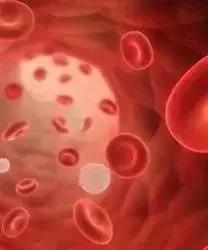Article
Sabatolimab Demonstrates Durable Clinical Benefits in Patients With AML, High-Risk MDS
Author(s):
Sabatolimab, an investigational TIM-3 monoclonal antibody, induced a median duration of response greater than 1 year for patients with very high/high-risk myelodysplastic syndrome and acute myeloid leukemia when used in combination with hypomethylating agents.

Sabatolimab (MBG453), an investigational TIM-3 monoclonal antibody, induced a median duration of response (DOR) greater than 1 year for patients with very high/high-risk myelodysplastic syndrome (MDS) and acute myeloid leukemia (AML) when used in combination with hypomethylating agents (HMA), according to findings presented at the 2021 63rd ASH Annual Meeting and Exposition.
“We saw durable responses in patients across a number of high-risk mutation profiles, including GP53,” said Andrew M. Brunner, MD, an assistant professor of medicine at Harvard Medical School and the Massachusetts General Hospital Center for Leukemia. He presented final analysis from a phase 1b study (NCT03066648). “Currently, we have several ongoing randomised trials that seek to validate and expand upon these study findings, both in a phase 2 and phase 3 setting, and MDS and AML.”
The overall response rate (ORR) was 56.9% in the MDS arm (n = 51) including 19.6% complete responses (CR). Brunner added that 23.5% had marrow CR (mCR), half of which were mCR with hematologic improvement (mCR-HI).
The median DOR was 17.1 months (95 % CI, 6.7-not evaluable [NE]). The median DOR was 19.3 months (95% CI, 12.1-NE) for patients who had a CR and 7.9 months (95% CI, 3.0-NE) for those who had mCR-HI.
The estimated 12-month progression-free survival was 54% (95% CI, 33.0%-71.0%).
In the AML arm (n = 40), the ORR was 42.5% including a 25% CR rate. Five percent of patients had CR with incomplete hematologic recovery (CRi). The median DOR was 12.6 months (95% CI, 5.2-18.0) with an estimated 12-month PFS of 26.8% (95% CI, 14.2%-41.0%). The median DOR for patients was 14.4 months (95% CI, 1.3-23.0) for patients who had CR and could not be estimated for those with CRi.
Investigators assessed the safety and efficacy of sabatolimab/HMA in patients with very high/high-risk MDS (n = 53) or newly diagnosed AML (n = 48). In the MDS group, 19 patients received decitabine while 34 received azacytidine compared with 22 and 26, respectively, in the AML group.
No patient received prior HMA. Forty-one patients were assigned to 20 mg/m2 decitabine on days 1 to 5, followed by escalating sabatolimab on days 8 and 22 of a 28-day treatment cycle or 100 mg of sabatolimab once every 4 weeks. Sixty patients received 75 mg/m2 azacitdine on days 1 to 7 followed by the same course of sabatolimab.
Primary end points included maximum tolerated dose and recommended dose, safety, and tolerability. Secondary end points were response rate and DOR.
The median age was 70 years (range 23-90) in the MDS group and 75 years (range, 59-89) in the AML group. Approximately 54% of patients in both groups were male.
In the MDS group, 34.0% had ECOG performance score of 0, 56.6% had a score of 1, and 9.4% had a score of 3. Thirty-two (60.4%) patients were high risk and 39.6% were very high risk.
In the AML group, 29.2% of patients had ECOG performance score of 0, 60.4% had a score of 1, and 10.4% had a score of 3. Eighteen (37.5%) of patients had intermediate risk disease and 62.5% had adverse disease.
Brunner said patients with adverse-risk disease were able to achieve durable responses. Mutation data was not available for all patients, but there were 15 patients among those with MDS who had TP53-mutated disease and 33 who had at least 1 European LeukemiaNet (ELN) adverse-risk mutation (TP53, RUNX1, or ASXL1).
ORR for TP53-mutation patients was 71.4% (10/14) including 28.6% who had CR and 14.3% with mCR-HI. For those with ELN mutations, the ORR was 65.6% (21/32) including 25% with CR and 21.9% with mCR. The median DOR was 21.5 months (95% CI, 6.7-NE) and 16.1 months (95% CI, 6.7-NE), respectively.
Among patients with TP53-mutated AML, the ORR was 40% (2/5) with 20% achieving CR and 20% with CRi. The median DOR was 6.4 months (95% CI, 4.2-NE). For those with ELN mutations, the ORR was 53.8% (7/13) including 38.5% with CR and 7.7% with CRi. The median DOR in this group was 12.6 months (95% CI, 1.3-NE).
“It’s a small number of patients, but the median duration of response was reasonably consistent [and] longer than we might have hoped for,” Brunner said.
Sabatolimab Appears Well Tolerated
Brunner said adverse events (AEs) were consistent with what investigators have observed with HMA alone. Overall, 1% (1/101) of patients had dose modification and 38% (38/101) had dose interruptions due to AEs. One patient with neutropenic colitis suspected to be related to study treatment died of septic shock.
Nine (17%) patients the MDS arm remain on treatment. Forty-four (83%) have discontinued treatment, primarily for progression (30.2%) or stem cell transplant (24.5%).
No patients discontinued due to AEs. Investigators observed no dose limiting toxicities related to study treatment or grade 3 or higher adverse events (AEs).
Two patients with AML remain on trial. Of the 46 (95.8%) who have discontinued, most did so due to progression (60.4%) or physician’s decision (16.7%). No patient in this group proceeded to stem cell transplant.
Three patients discontinued due to AEs. Investigators observed 1 dose limiting toxicity and 1 AE related to study treatment. Investigators observed 1 incidence each of grade 3 peripheral neuropathy, colitis, encephalopathy, hemophagocytic lymphohistocytosis, hepatitis, hypothyroidism, and immune-mediated lung disease.
Reference
- Brunner AM, Esteve J, Porkka K, et al. Efficacy and safety of sabatolimab (MBG453) in combination with hypomethylating agents (HMAs) in patients (Pts) with very high/high-risk myelodysplastic syndrome (vHR/HR-MDS) and acute myeloid leukemia (AML): final analysis from a phase Ib study. Paper presented at: 2021 ASH Annual Meeting and Exposition; December 11-14, 2021; Atlanta, GA. Abstract 244.









